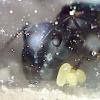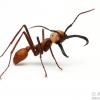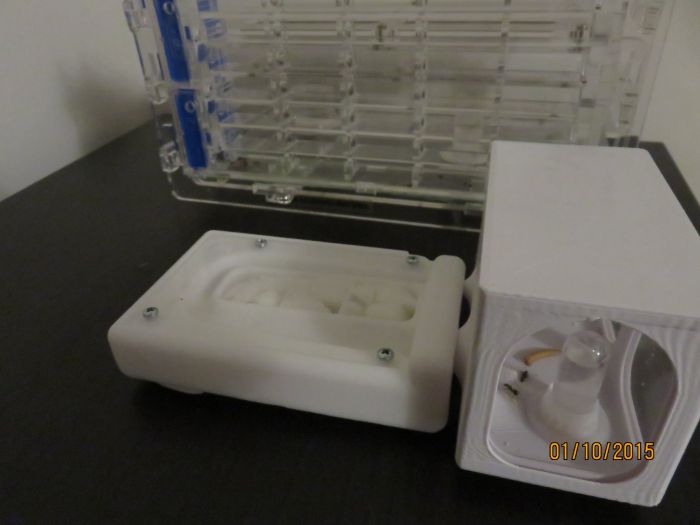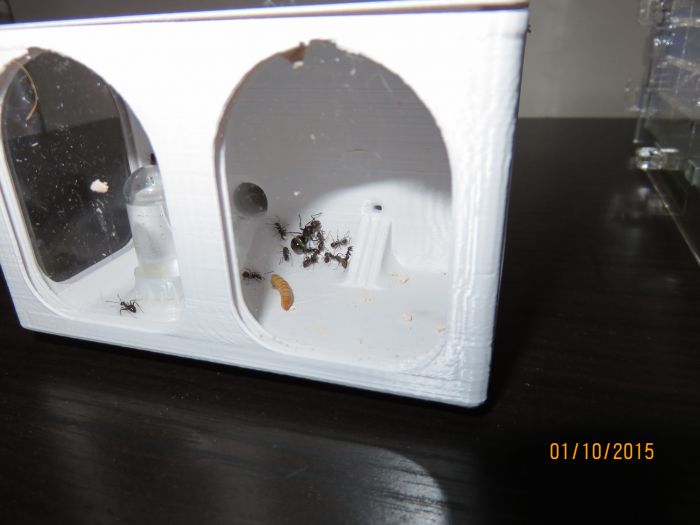I'm sorry you're having trouble, and I'll certainly do as much hand-holding as I can to help achieve the desired outcome.
This seems to be an ideal colony for the GroTube, in terms of size. The GroTube is a tool first, and a formicarium second. There is no reason why it would be impossible to successfully use this tool with these ants.
Antkeeping is not a hobby for those unwilling to experiment. The reward you get with GroTube is unparalleled visibility. But no one ever said success came without a learning curve. Similarly, most desktop PCs are fine and capable tools; but in the wrong hands, they're about as useful as a brick.
The first mistake others I've heard have made when using a GroTube is to simply dump the ants in the foraging area, as opposed to using the supplied tubing connectors to fit over test tubes to relocate ants directly to the nest portion itself. It would be very difficult to determine why these ants have decided to stay in the outworld, as opposed to the nest, since ants don't speak our language very well.
What is known, is that the ants have examined their surroundings and have decided, collectively, that some attribute to the foraging area is more attractive than the combined attributes of the nest area. It is up to the antkeeper to make adjustments so the ants feel comfortable in their new home, thus resulting in the outcome of the ants residing in the desired section of the formicarium.
Checklist with corrective action steps:
- Too much illumination. There is less light in the foraging area because of the opaque lid. Place a towel or other opaque material over the nest area, and illuminate the foraging area with a lamp until the ants move inside the nest area.
- Too dry. Fill the water reservoirs to the very brim (touching the acrylic lid). Hydration works best with the addition of small amounts of substrate along the outside of the brim, where the air ducts are located, by which water will wick into the substrate when the reservoirs are almost overflowing, making the nest very humid (see below "Photo B").
- Too wet. Remove the water with a needle syringe (not included).
- Undetermined material preference. The supplied 6 substrates may be used in some combination to carefully customize some part of the interior of the GroTube, making it similar to a natural nest. No doubt, you've seen how dspdrew chose to customize his nest for a colony of Pogonomyrmex.
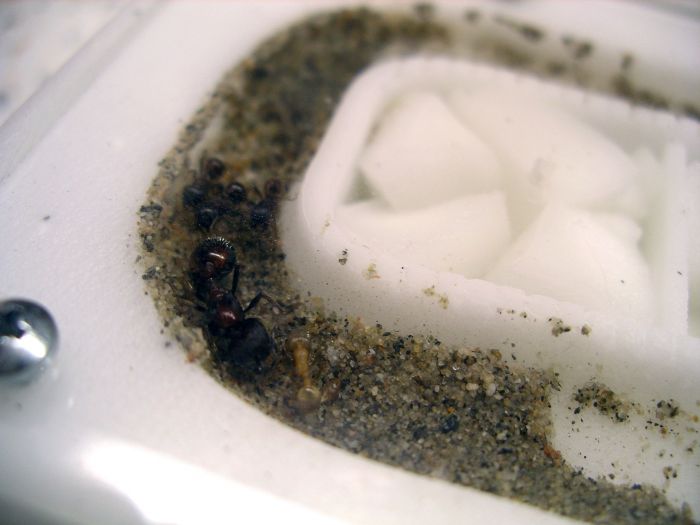
Photo A (Pogonomyrmex inhabiting a GroTube, sand substrate lines the floor)
I wish I could go into more detail as to how to go about doing this, and the best practices, but that would be beyond the scope of this troubleshooting guide. I can say that all my Lasius colonies chose to add substrate from the foraging area to the nest area when the inside of the nest was very moist, whereas some ants prefer to excavate loosely placed substrate that is already placed in the nest area, taking it out. Some ants prefer more substrate than others.

Photo B (Lasius inhabiting the GroTube. Ants have brought in various substrates and customized the habitat.)
Here is a rather unattractive photograph, nonetheless one that depicts my most successful Lasius colony inhabiting their GroTube. They recently started bringing in a ton of black sand substrate (included with kit), in response to my adding a lot of water in the water reservoirs. The nest is so humid, much like their natural subterranean habitat, condensation formed when the temperature in the room dropped within the past few hours.
The above 4 attributes are the only attributes that may be adjusted to attempt to make the nest portion of a GroTube more attractive than the attached foraging area. The problem is that the ants were introduced to the foraging area; or, if they were first introduced to the nest area, they were not allowed sufficient time to acclimate before attaching the foraging area.
But to reiterate, the GroTube, as a tool, and like any formicarium, must be used with the idea that one must respond to deficiencies such as the amount of light, moisture, or quality/quantity/orientation/location of building materials, with the appropriate corrective action, in order to attain success.
Edited by drtrmiller, January 11 2015 - 12:42 AM.

